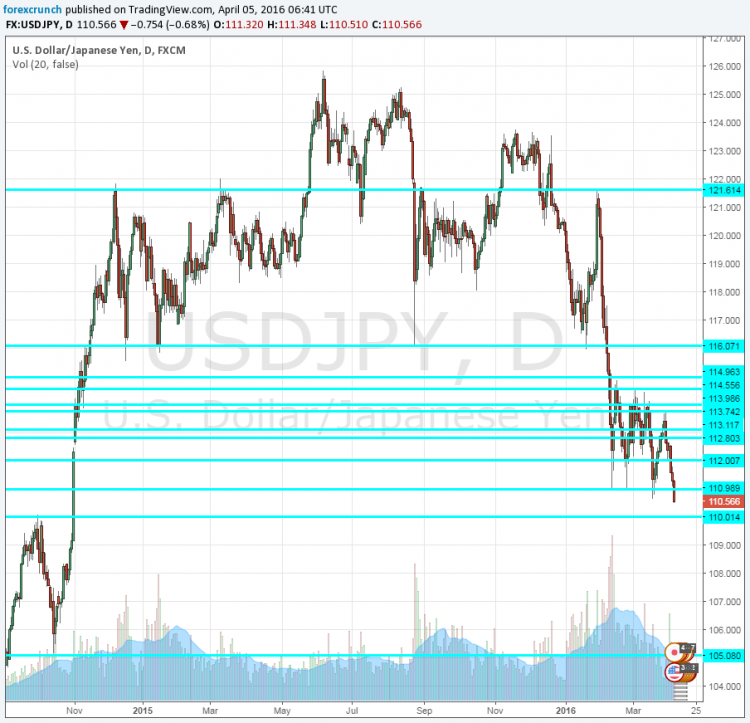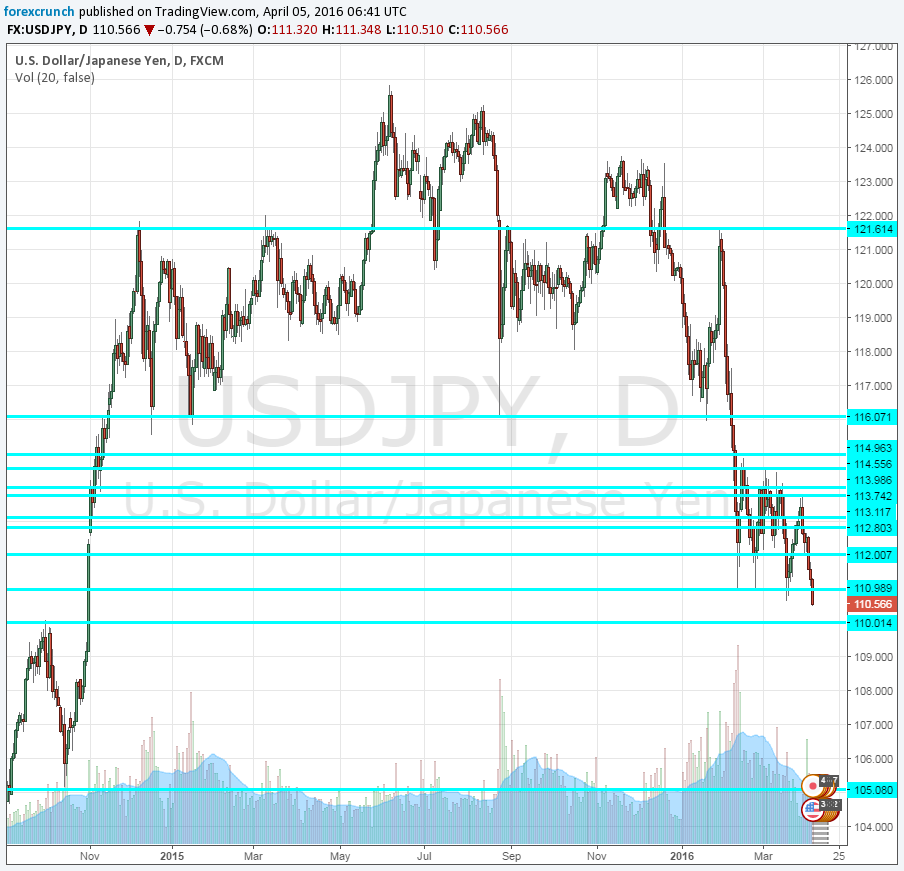
A negative market mood is the best fuel for the Japanese yen. Safe haven flows are sending the currency to the highest levels against the USD since October 2014, when the BOJ introduced the second round of its QQE program.
Oil prices as well as stocks in most of Asia are falling. The Panama Papers, Brexit fears and IMF warnings about China are all cited as reasons for the sell off in risk currencies and the rise of the yen.
USD/JPY is now trading at 110.58, after touching 110.45. The 111 line was seen as the “line in the sand” – it supported the pair twice and an attempt to breach the line was followed by a wild jump. Many suspected that the jump was an intervention by the central bank.
Intervention and the oil connection
Also now, we hear that the Japanese Ministry of Finance and the Bank of Japan are convening behind closed doors to discuss markets. Will they do something to stop the strengthening yen?
WTI crude oil was supported around $36 and traded above $40 this week. However, things have turned negative here: reports that Russia is pumping out oil at record levels, high tension between Saudi Arabia and Iran over exports, a Federal Reserve report about the resilience of the US shale oil industry and a rise in oil shorts have all weighed against the black gold. And when oil falls, also stocks do, as we’ve seen so many times in recent months.
Here is how the move looks on the daily chart.. The move to the downside continues and it’s hard to see a stop in sight. Will the tables turn positively anytime soon? The next level of support is clearly the very round number of 110.
Update: the pair found support at 110.30. We heard some noises from Japan. They are “closely watching” markets and ready to respond.
















